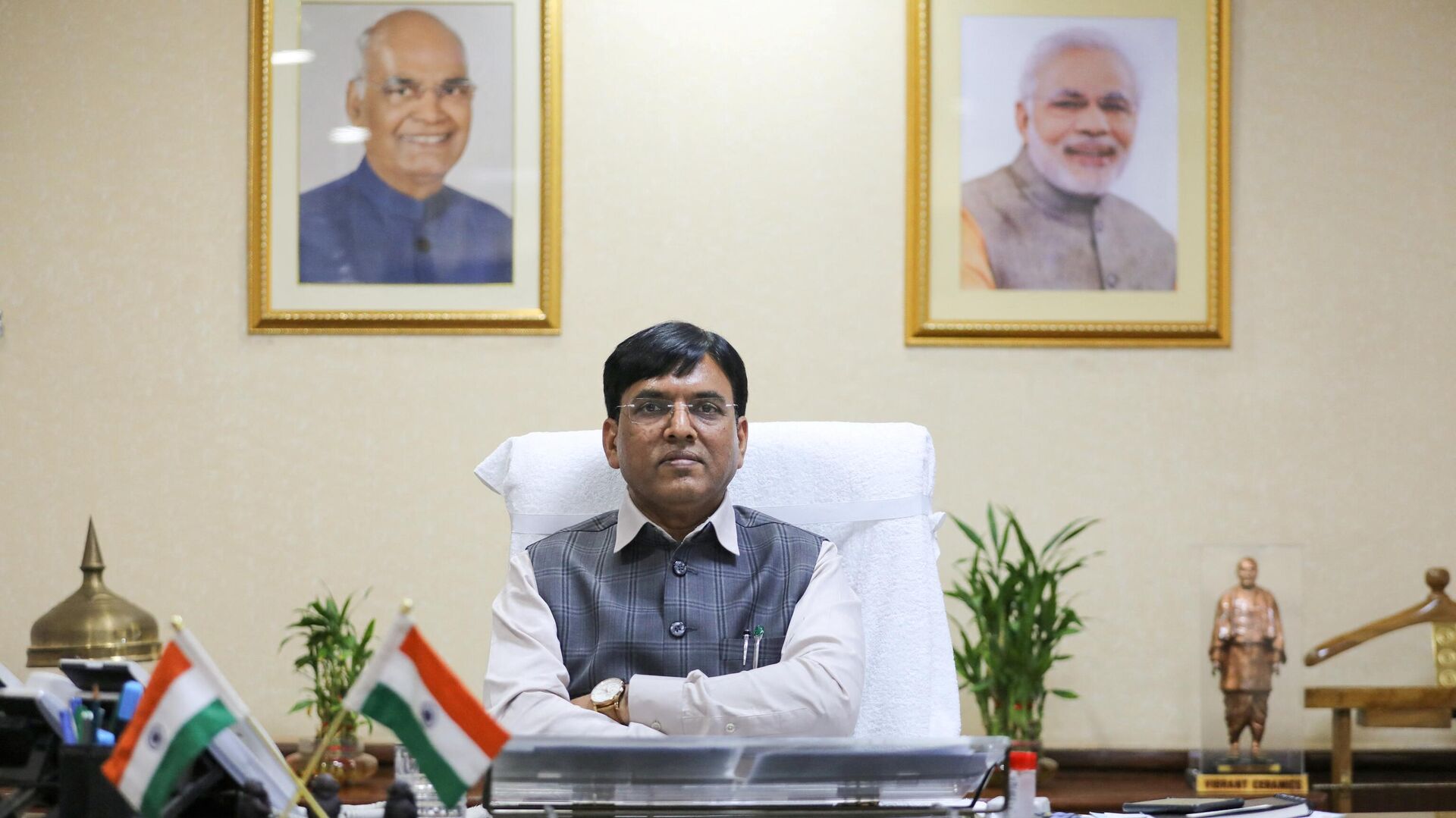In a Massive Surprise, India's Health Minister Opposes Own Party MP's Bill on Population Control
08:17 GMT 02.04.2022 (Updated: 10:43 GMT 19.07.2022)

© REUTERS / ANUSHREE FADNAVIS
Subscribe
Population control is one of the key issues for India's federally-ruling Bharatiya Janata Party (BJP). Last year, several states where the party was in power pushed for population control bills. Meanwhile, Uttar Pradesh introduced a law where people with more than two children wouldn't be allowed to run for local office or get government jobs.
The clamour for a population control bill may have gained traction in several states, including Madhya Pradesh, Karnataka, Gujarat, Assam, Tripura, Uttarakhand, and Tripura in recent times.
But India's Health Minister Mansukh Mandaviya is opposed to ushering in such legislation, the leader told lawmakers in the Rajya Sabha, the upper house of Parliament on Friday.
In response to a bill introduced by BJP MP Rakesh Sinha, Mandaviya argued that the government had been successful in raising awareness about the subject through various health campaigns and hence believed that force wasn't needed to push the country's population to adopt family planning of their own free will.
Sinha's bill had proposed to enforce a two-child rule with penalties for those who violate the norms.
Sinha had introduced his 'Population Regulation Bill' in the Rajya Sabha back in July 2019. But as the COVID-19 pandemic hit the world the following year, the Indian Parliament only debated issues that focused on internal security, external threats and vaccines, etc.
Sinha, however, went on to withdraw the Bill after Mandaviya intervened in the matter in the Rajya Sabha on Friday.
To make Sinha understand that the South Asian nation's population growth was consistently ebbing, Mandaviya used figures from the National Family Health Survey (NFHS) and data from the official Census of India.
"When we talk about the NFHS and look at the Census, we can see the success we have achieved. In 1971, the average annual exponential growth was 2.20; 2.14 in 1991; 1.97 in 2001; and 1.64 in 2011. It shows population growth has declined, and has been declining. The rate of growth seen between the 1960s and 1980s has come down significantly. It is a good sign. The total fertility rate has dropped to 2.0 in NFHS-V," Mandaviya said.
The Health Minister also stated that the teenage birth rate had dropped to 6.8 while teenage marriage had gone down to 23.3, a key indicator that the government's awareness programmes were working.
"This indicates that government policies on population control without using force, or making it compulsory, and through awareness are working… I request him (Sinha), we are trying to work towards meeting your objectives so that all classes, communities get the best opportunities to develop. I request that you withdraw the Bill," he concluded.
Between 1901 and 2011, the proportion of India's Hindu majority population has fallen by as much as 13.8 percent. On the contrary, the percentage of Muslims in the country's population has gone up by 9.8 percent.
This is often cited as the main reason for bringing in legislation to prevent the demographics of the nation from being changing.
The BJP, who pursues an aggressive brand of politics centred around Hindutva, is worried to see the numbers of the country's majority dwindling.
But India's Health Minister Mansukh Mandaviya is opposed to ushering in such legislation, the leader told lawmakers in the Rajya Sabha, the upper house of Parliament on Friday.
In response to a bill introduced by BJP MP Rakesh Sinha, Mandaviya argued that the government had been successful in raising awareness about the subject through various health campaigns and hence believed that force wasn't needed to push the country's population to adopt family planning of their own free will.
Sinha's bill had proposed to enforce a two-child rule with penalties for those who violate the norms.
Sinha had introduced his 'Population Regulation Bill' in the Rajya Sabha back in July 2019. But as the COVID-19 pandemic hit the world the following year, the Indian Parliament only debated issues that focused on internal security, external threats and vaccines, etc.
Sinha, however, went on to withdraw the Bill after Mandaviya intervened in the matter in the Rajya Sabha on Friday.
To make Sinha understand that the South Asian nation's population growth was consistently ebbing, Mandaviya used figures from the National Family Health Survey (NFHS) and data from the official Census of India.
"When we talk about the NFHS and look at the Census, we can see the success we have achieved. In 1971, the average annual exponential growth was 2.20; 2.14 in 1991; 1.97 in 2001; and 1.64 in 2011. It shows population growth has declined, and has been declining. The rate of growth seen between the 1960s and 1980s has come down significantly. It is a good sign. The total fertility rate has dropped to 2.0 in NFHS-V," Mandaviya said.
The Health Minister also stated that the teenage birth rate had dropped to 6.8 while teenage marriage had gone down to 23.3, a key indicator that the government's awareness programmes were working.
"This indicates that government policies on population control without using force, or making it compulsory, and through awareness are working… I request him (Sinha), we are trying to work towards meeting your objectives so that all classes, communities get the best opportunities to develop. I request that you withdraw the Bill," he concluded.
Between 1901 and 2011, the proportion of India's Hindu majority population has fallen by as much as 13.8 percent. On the contrary, the percentage of Muslims in the country's population has gone up by 9.8 percent.
This is often cited as the main reason for bringing in legislation to prevent the demographics of the nation from being changing.
The BJP, who pursues an aggressive brand of politics centred around Hindutva, is worried to see the numbers of the country's majority dwindling.

